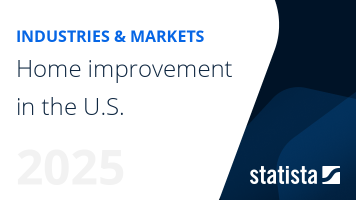in 2021. As the largest country in the region, Brazil alone held a 39 percent share of the total South American revenue,
. The revenue for the
, forecast to reach roughly 13 billion U.S. dollars by 2027.
Different from strictly geographical, economic, or political divisions, Latin America is most often used as a term for the region comprising Romance language-speaking countries in the Americas. It does not include the French-speaking part of Canada, as well as several other countries in which Spanish, Portuguese, or French is not one of the predominant languages. Geographically, the region starts in Mexico and stretches down to the southernmost parts of South America, including countries in Central America and the Caribbean.
Retailers
While the region's DIY and home improvement retail market is significantly made up of small, local companies, many multinational retailers are also present. Among those is the Chilean retail company Falabella, which
operated over 250 of its Sodimac home improvement stores in seven Latin American countries as of 2021. That same year,
nearly 40,700 people worked in the home improvement segment within Falabella, representing just under 40 percent of the company’s total headcount. The French home improvement and gardening retailer Leroy Merlin is another example. Its Latin American presence is limited to Brazil, where
Leroy Merlin employed over 10,500 people in 2021.
Retail and consumer spending
Similar to other sectors of the economy, online sales in the DIY and home improvement sector have increased over the past few years. On the other hand, physical stores still account for most stores. According to the latest data available, there were
over 1,000 companies operating in the construction material retail sector in Brazil as of 2019. Regarding per capita consumer spending,
Chile and Uruguay were in the lead in Latin America in 2020, with 636.11 and 635.98 U.S. dollars spent per capita, respectively.
This text provides general information. Statista assumes no
liability for the information given being complete or correct.
Due to varying update cycles, statistics can display more up-to-date
data than referenced in the text.







































